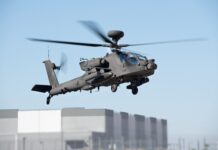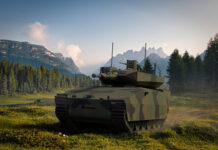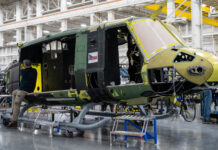As Bell continues to work on its 360 Invictus helicopter for the US Army’s Future Attack Reconnaissance Aircraft (FARA) programme, developing a platform that meets or indeed exceeds the stipulated requirements, a senior Bell executive told ESD at the Paris Air Show on 20 June 2023 that adherence to the US Department of Defense’s requirement for a Modular Open Systems Approach (MOSA) will be vital to prevail in the contest.
Under the MOSA strategy an original equipment manufacturer (OEM) must implement an open-systems architecture with its platform to facilitate greater interoperability and cost-effective upgrades.
As Chris Gehler, vice president and FARA programme director at Bell, put it in relation to the 360 Invictus, “We go really fast and can carry as much as an Apache, but the MOSA aspect is perhaps even more important because it’s a life-cycle cost gamechanger.
“The army does not want to be locked into asking the OEM ‘How much is it going to cost to integrate this kit?’”
Adhering to MOSA principles will mean that, if the US Army wants to upgrade its FARA platform in future, it will be able to do “at less expense, with little or no testing, perhaps even without OEM involvement”, said Gehler.
Adherence to this procurement regime has already started, Gehler noted; Bell had its first Open-System Verification Demonstration (OSVD) with the army in May this year: a situation where army personnel literally enter Bell’s systems integration lab and test whether they are able to insert a given capability without the OEM even being in the room. More of these events are to come next year, said Gehler.
The Bell 360 Invictus is vying against Sikorsky’s Raider X compound helicopter for the FARA requirement; both aircraft were downselected from a larger field in March 2020. At the moment the contending platforms are awaiting the arrival of the delayed Improved Turbine Engine Program (ITEP) powerplant, which is now supposed to be delivered by the end of the year. Assuming that is the case, Gehler said Bell will begin ground tests with the 360 Invictus in early 2024, adding, “Hopefully we’ll be flying by the late summer of 2024.”
Meanwhile, under its FARA Other Transaction Authority (OTA) award, which allows potential suppliers more flexibility in addressing programme requirements than a traditional contract, Bell is not only developing a flying prototype but also working on the Increment 1 Weapon System: the aircraft that will actually be fielded to the army.
The requirements for FARA competitive prototypes are relatively few, with the main ones being: a maximum speed of at least 180 kt (333 km/h), a maximum rotor diameter of 40 ft (12.2 m), a maximum gross weight of 14,000 lb (6,350 kg) and a requirement for it to be powered by the ITEP engine.
Leveraging a common open-architecture digital backbone comparable to its V-280 Valor tiltrotor stablemate, the 360 Invictus features four high-speed articulating rotor blades derived from the larger Bell 525 Relentless medium helicopter. The 360 Invictus also features wings that create lift when the aircraft is travelling at speed, thus relieving rotor lift demand, and that suppress retreating blade stall at high speed.
The 360 Invictus employs a tandem cockpit for the pilot and gunner, a retractable undercarriage and, with the exception of its turret-mounted 20 mm cannon, can carry its weapons internally to eliminate drag.
With regard to the winning FARA candidate being selected, Gehler said the army will take that decision in advance of a Milestone B decision for the programme probably in late 2025, leading to an engineering manufacturing and development (EMD) contract in early 2026.
That said, Gehler noted that the army is still conducting an analysis of alternatives, looking at whether the case for proceeding with the FARA programme remains sound or whether, for example, it should go with an unmanned platform or simply continue with the Apache. Regarding the latter Gehler noted that, while the Apache has been updated and upgraded a number of times over its service life, “it’s still 40-year-old technology”.
Peter Felstead












